| Science demonstrations
|
 Demonstration
gyroscopes are often found in a learning environments such as schools or
colleges to teach the physics of gyroscopes. Traditional demonstration
gyroscopes tend to be gimballed to allow the user to understand how a gyroscope
can continually point in one direction. A gimballed gyroscope allows the user
to place weights/forces to one axis to see how the gyroscope will react. The
user can also put pressure on a side of the gyroscope (by touching the gimbal)
and 'feel' the forces involved which often gives a little more excitement to
the demonstrations. Demonstration
gyroscopes are often found in a learning environments such as schools or
colleges to teach the physics of gyroscopes. Traditional demonstration
gyroscopes tend to be gimballed to allow the user to understand how a gyroscope
can continually point in one direction. A gimballed gyroscope allows the user
to place weights/forces to one axis to see how the gyroscope will react. The
user can also put pressure on a side of the gyroscope (by touching the gimbal)
and 'feel' the forces involved which often gives a little more excitement to
the demonstrations. |
| Computer Pointing Devices |
 There
are a number of computer pointing devices (in effect a mouse) on the market
that have gyroscopes in side them allowing you to control the mouse cursor
while the device is in the air! They are also wireless so are perfect for
presentations when the speaker is moving around the room. The gyroscope inside
tracks the movements of your hand and translates them to cursor
movements. There
are a number of computer pointing devices (in effect a mouse) on the market
that have gyroscopes in side them allowing you to control the mouse cursor
while the device is in the air! They are also wireless so are perfect for
presentations when the speaker is moving around the room. The gyroscope inside
tracks the movements of your hand and translates them to cursor
movements.
|
| Racing Cars |
Gyroscopic behaviour is used in the racing car industry. This is because car
engines act just like big gyroscopes. This has its uses, for example in
the American Indy car racing some of the tracks are in a oval in shape. During
the race the cars go round the circuit in one direction only (the car only ever
turns in one direction e.g. left). Because of the of the gyroscopic forces from
the engine depending on whether the engine is spinning closewise or
anti-clockwise the cars nose will be forced up or down. Providing the engine
spins in the right direction it can help the car to stay on the track. |
| Motor Bikes |
Wheels on motorbikes act as gyroscopes and make the bike easier to balance
(stay up right) when moving. For more details see:
How gyroscopic forces effect motor bikes
The bicycle wheel as a gyroscope
|
| Spinning tops |
Spinning tops are a simple form of gyroscope, as the spinning top is rotated
it is able to stand up right without falling over due to its gyroscopic
behaviour. However the mathematics are more complex because the friction with
the floor changes as the gyroscope leans to the side. |
| Gyrocompasses |
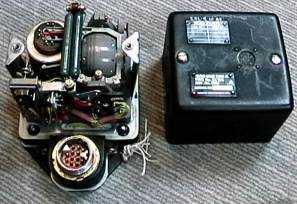 Gyrocompasses are
basically navigation aids. Gyroscopes don't like to change
direction, so if they are mounted into a device that allows them to
move freely (low friction gimbal). Then when the device is moved
in different directions the gyroscope will still point in the same direction.
This can then be measured and the results can be used in similar ways to a
normal compass. But unlike a standard magnetic compass is not magnetic
environmental changes and readings are move accurate. Gyrocompasses are
commonly used in ships and aircraft. Gyrocompasses are
basically navigation aids. Gyroscopes don't like to change
direction, so if they are mounted into a device that allows them to
move freely (low friction gimbal). Then when the device is moved
in different directions the gyroscope will still point in the same direction.
This can then be measured and the results can be used in similar ways to a
normal compass. But unlike a standard magnetic compass is not magnetic
environmental changes and readings are move accurate. Gyrocompasses are
commonly used in ships and aircraft.
|
| Virtual Reality |
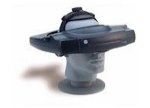 Gyroscopes
have been used in virtual reality headset and other VR products for a number of
years. A number of miniature gyroscope sensors are placed in the headset.
Wgenever the user moves their head the direction and speed is sent back to the
computer. The computer can then change the display as required. Gyroscopes
have been used in virtual reality headset and other VR products for a number of
years. A number of miniature gyroscope sensors are placed in the headset.
Wgenever the user moves their head the direction and speed is sent back to the
computer. The computer can then change the display as required. |
|
Anti-roll devices/stabilisers
Monorail Trains
|
Again because of the behaviour, gyroscopes are used to stop things from
falling over, some mono-trains use gyroscopes and boats/ships often use them so
that in bad seas the boat is kept relatively up right and not thrown about.
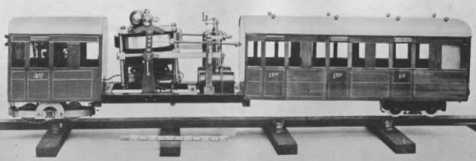
From the book: H.Crabtree (1914) "Spinning Tops and Gyroscopic
Motion"
|
|
Ship stabilisers
|
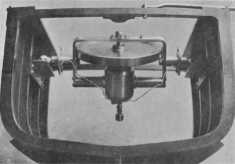
From the book: H.Crabtree (1914) "Spinning Tops and Gyroscopic
Motion"
Photo by: Underwood & Underwood.
|

From the book: H.Crabtree (1914) "Spinning Tops and Gyroscopic
Motion" Photo by: Underwood & Underwood.
|
|
| Artificial horizons / autopilot |
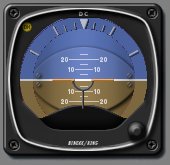 This works the
same way as a gyrocompass but on a different axis. The artificial horizon gauge
shows the position of the aircraft relative to the horizon i.e. the pictch
of the aircraft. This works the
same way as a gyrocompass but on a different axis. The artificial horizon gauge
shows the position of the aircraft relative to the horizon i.e. the pictch
of the aircraft.
|
| Segway Scooter |
For more details about how they work visit
the segway site. |
| Robotics |
Gyroscopes are now being use to keep complex robots up right, that would normally just fall
over. Here is an example:
Two legged robot
|
| Levitron (TM) |
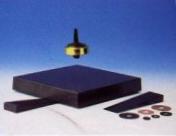
Marketed as an executive toy the Levitron is a unique invention that shows
the stabilizing affect of gyroscopes.
Two powerful permanent magnets allow a gyroscope to 'float' in mid air. The
first magnet is placed on a level surface contained in a plastic base, while
the other is housed in a gyroscope. If the gyroscope is placed a couple of
inches over the base with out the gyroscope rotating and then let go, it will
simply turn over due to the attractions of the magnets and will fall (or is
attracted) to the base. If the gyroscope could be held completely level then
the forces of the magnets will keep them apart. And this is exactly what the
gyroscope does when it is rotating at high speed.
The first picture shows the base magnet, with the clear plastic tray, to raise
the gyroscope on top. The gyroscope has been placed on the tray and is about to
be spun.
In the second and third picture the gyroscope is now spinning and the clear plastic tray
is being lifted to a position where the forces from the two magnets can keep
the gyroscope floating in mid air.
The last picture shows the gyroscope floating in mid air after the clear tray
has being taken away.




Click here to see a video of the Leviron in action
|
|
|

